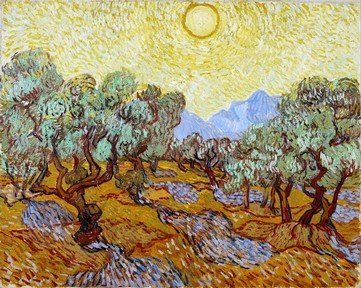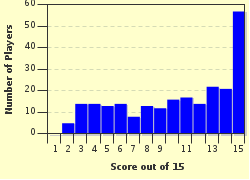Quiz Answer Key and Fun Facts
1. Most of the Roman deities were based upon Greek examples. However, the Roman pantheon does contain some "original" deities, for instance Vertumnus, the god of gardens and growing plants. Who made in 1591 a rather famous Mannerist painting depicting Vertumnus, in which the face is constructed of various fruits, vegetables and flowers?
2. In 1643, Bernini constructed a fountain in Rome named after a Greek legendary aquatic creature. What is the name of this fountain?
3. One of the masterpieces of Flemish painting in the Sixteenth Century is "Landscape with the Fall of Icarus", made in 1555. Which artist made this puzzling picture, focusing on a ploughing farmer on the foreground?
4. One of the most moving scenes in the Iliad is when Hector says farewell to his wife. It is indeed a farewell, for he will succumb to Achilles. Giorgio de Chirico made in 1973 a statue of this final farewell. Who is Hector's wife?
5. The myth of Orpheus and Eurydice inspired many artists. When his wife Eurydice died, Orpheus the musician went to the Underworld and played such a marvellous song that Hades promised Orpheus that he would revive Eurydice, on one condition: that he would not turn his head to look back. A French Realist painted this scene in 1861. Which French artist do I refer to?
6. Which French artist created the lithograph "Mephistopheles", named after one of the names of the devil? This artwork is probably dated 1828.
7. Many medieval and Scandinavian legends feature a fictitious animal which can only be captured and tamed by a virgin. These tales inspired Domenichino to paint a fresco entitled "The Maiden and the ______". Which animal fills in the blank?
8. Joachim Patenier painted the mythological ferryman whose duty consisted in getting the souls of our dearly departed to the Underworld. What is the name of this ferryman according to Greek mythology and to the title of this painting?
9. Romulus and Remus are the legendary founders of Rome. But what is their mother's name? She inspired Iacopo della Quercia for a statue sculpted in 1419.
10. As you could expect, even Arthurian legend has inspired some graphic art. Which Arthurian knight was portrayed by the French painter Odilon Redon in 1912? There is also an opera with his name by one of the most notorious German composers.
11. It is not only Greek and Roman mythology that has inspired painters and sculptors. Which Russian artist completed in 1876 the painting "Sadko in the Underwater Kingdom"?
12. The Greeks had two messengers of the gods: Hermes and a lesser known goddess. Rodin sculpted this female messenger in 1890. What is her name? Today, her name is mostly used to indicate a plant.
13. Salvator Rosa painted in 1664 Odysseus as a shipwrecked sailor in the land of the Phaeacians. Which princess discovered the naked Odysseus?
14. Which of the following four paintings by Le Sueur is the odd man out? All of these paintings were indeed made by Le Sueur, but one of them is thematically not related.
15. A Danish sculptor produced in 1828 a statue of Jason with the Golden Fleece. Who sculpted this statue?
Source: Author
JanIQ
This quiz was reviewed by FunTrivia editor
CellarDoor before going online.
Any errors found in FunTrivia content are routinely corrected through our feedback system.

